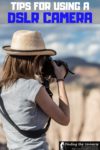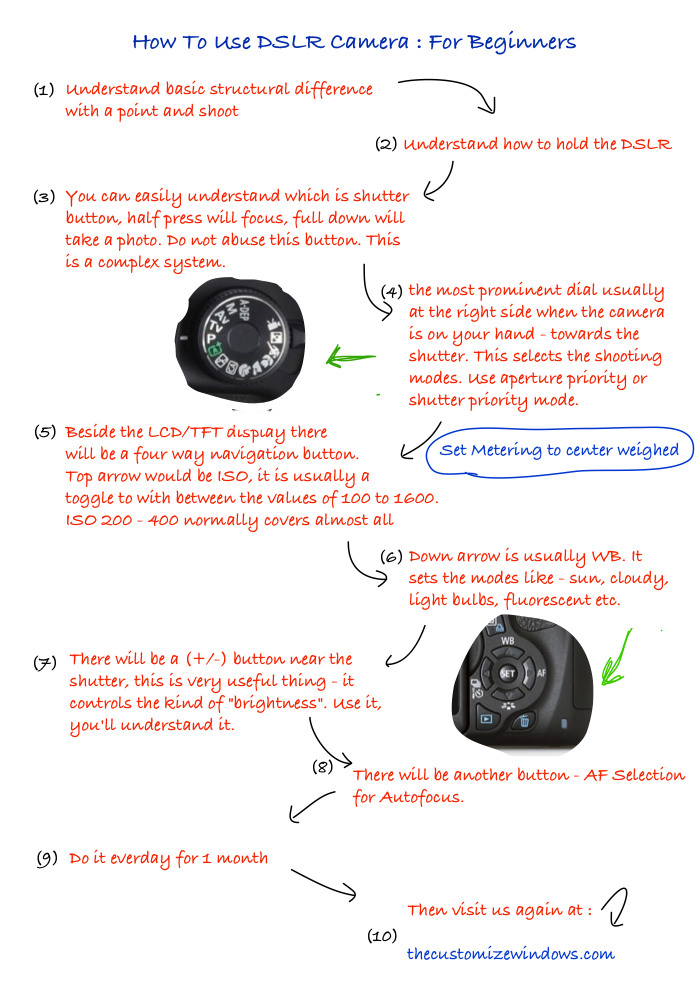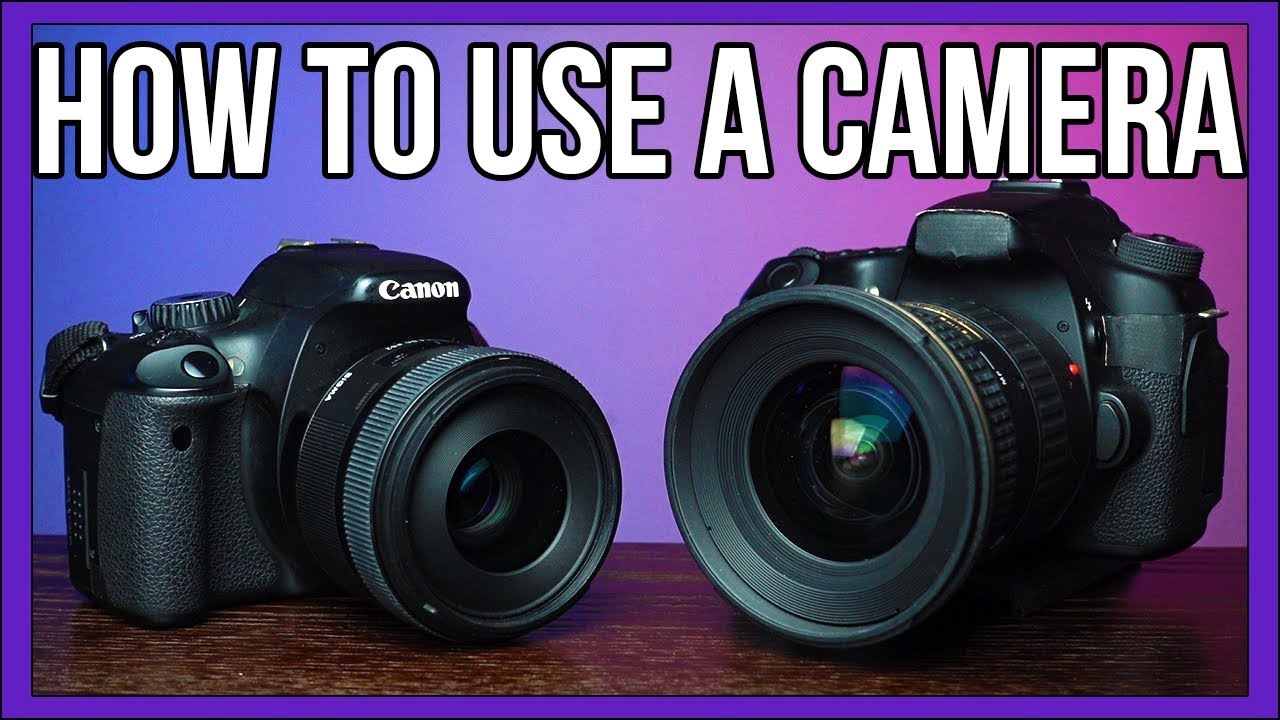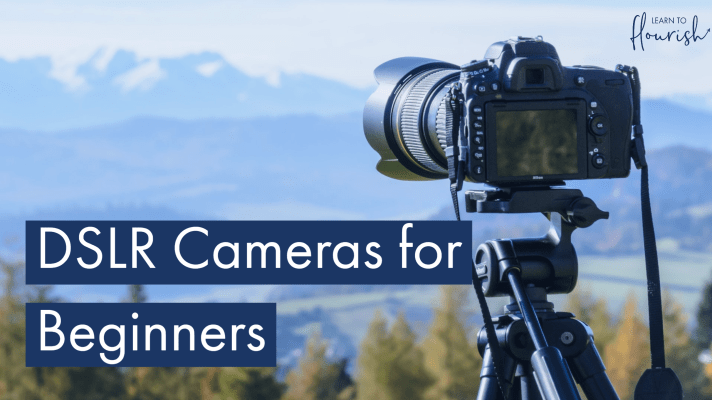Hey there! If you're new to photography, you might have heard a lot about DSLR cameras but aren't quite sure what all the fuss is about. Don't worry! In this section, we’ll break it down for you in a simple way. DSLR, or Digital Single-Lens Reflex camera, combines the old-school analog system with modern digital technology to give you stunning photos.
One of the coolest aspects of DSLR cameras is their versatility. They let you swap out lenses, giving you the freedom to shoot everything from breathtaking landscapes to dreamy portraits. With a DSLR, you're not just capturing moments; you’re creating art.
Moreover, thanks to their larger sensors and advanced features, DSLRs tend to perform better in low-light conditions compared to compact cameras or smartphones. This means you're more likely to get that beautiful shot even when the lighting isn't perfect. Plus, the optical viewfinder gives you a natural view of the scene, making it easier to frame your photos accurately.
So if you're eager to capture high-quality images, a DSLR is definitely worth considering. And the best part? You can find a wealth of resources, including Dailymotion video tutorials, to help you get started on your journey into photography!
Understanding Camera Settings

Now that you've got a grip on what a DSLR camera is, let’s dive into understanding the camera settings. This is where the magic happens and where you can truly start to express your creative vision!
A DSLR camera has a range of settings that can seem overwhelming at first. Here’s a breakdown of the key elements:
- Aperture: This controls how much light enters the lens. It's measured in f-stops. A lower f-number (like f/1.8) allows more light in, giving a nice blurry background (great for portraits), while a higher f-number (like f/16) helps keep everything in focus (ideal for landscapes).
- Shutter Speed: This determines how long the camera's shutter is open to let light in. Fast shutter speeds (like 1/500 sec) freeze motion, perfect for capturing sports or action, while slower speeds (like 1 sec) can create motion blur, which is great for artistic shots.
- ISO: This setting adjusts the camera’s sensitivity to light. A low ISO (like 100) is best for bright conditions, ensuring clear images, while a high ISO (like 3200) is useful in dim conditions but can add graininess or noise.
To get the most out of these settings, think of them as a triangle—the Exposure Triangle. Balancing them helps achieve the perfect exposure based on your environment. Experiment with these settings and check out Dailymotion for some fantastic video tutorials that provide visual examples and tips on mastering your camera!
Also Read This: Exploring the Variety of Films Available on Dailymotion
3. Essential Gear for Beginners

Starting your journey into the world of DSLR photography can be incredibly exciting, but it’s important to have the right gear. While investing in a DSLR camera is a great first step, there are a few essential accessories that can enhance your overall experience. Here’s a rundown of what you should consider:
- Camera Body: Choose a model that feels comfortable for you. Popular options for beginners include the Canon EOS Rebel series or Nikon D3500.
- Lens: Most camera bodies come with a kit lens. As a beginner, an 18-55mm lens is versatile, but consider adding a prime lens, like a 50mm, for sharp portraits.
- Tripod: A tripod is invaluable for long exposures, low-light situations, or just to eliminate camera shake. Lightweight models are great for on-the-go shooting.
- Memory Cards: Invest in a couple of high-speed SD cards for storing your high-resolution images. Aim for at least 32GB to start with, but more is always better!
- Camera Bag: Protect your investment with a sturdy camera bag. It’ll help keep your gear organized and safe from the elements.
- Cleaning Kit: Dust and smudges can impact your photos. A cleaning kit with a lens cloth and brush will keep your camera equipment in top shape.
Having the right accessories can make a huge difference as you learn. Don’t rush to buy everything at once; start with the essentials and then expand based on your developing skills and interests!
Also Read This: How to Make Round Paper Lanterns: Crafting Tutorial on Dailymotion
4. Dailymotion Video Tutorials for Practical Learning

Now that you have your DSLR gear, where do you go from here? Practical learning is the best way to master your camera. Dailymotion is an excellent resource for beginners, offering a wealth of video tutorials that simplify complex concepts. Here’s how you can leverage these tutorials for your photography journey:
- Understanding Camera Settings: Look for tutorials that break down essential settings like ISO, aperture, and shutter speed. These videos often provide real-world examples, making it easier to grasp how these settings affect your photos.
- Composition Techniques: Find videos that discuss the rule of thirds, leading lines, and other composition tips. Visual examples will help you understand how to frame your shots effectively.
- Editing Basics: Don’t forget about post-processing! Tutorials on basic editing software can help you enhance your images after shooting.
- Q&A Sessions: Many video tutorials feature Q&A segments where you can get answers to common beginner questions. This interactive element can clarify any confusion!
The beauty of Dailymotion is that it allows you to learn at your own pace. You can pause, rewind, and even rewatch segments until you fully grasp each concept. Dive in and soak up as much knowledge as you can!
Also Read This: Is Downloading from Dailymotion Legal?
5. Basic Photography Techniques to Master

When you're diving into the world of DSLR photography, mastering some basic techniques can elevate your skills and help you take stunning photos. Let's break down a few essential techniques that can make a significant difference in your photography journey.
- Understanding Exposure: Exposure is the amount of light that reaches your camera sensor. It's determined by three key elements: Aperture, Shutter Speed, and ISO. Getting the right exposure is crucial for achieving the desired brightness and mood in your images.
- Composition: This is all about how you frame your shot. Familiarize yourself with the rule of thirds, leading lines, and framing techniques. Using these principles can help draw the viewer's eye to the subject and create more balanced photos.
- Focusing: Knowing how to focus correctly is fundamental. Use autofocus for convenience, but don’t shy away from manual focus when you're dealing with tricky lighting or subjects. Zooming in on your subject can ensure you get the sharpest image possible.
- White Balance: This is about adjusting the colors in your photos. Different lighting conditions can give your images a color cast, so adjusting the white balance setting can help you achieve natural-looking colors.
- Lighting: Mastering lighting can drastically improve your photography. Experiment with natural light during different times of the day and explore using artificial light sources to create your desired effect.
Practice these techniques regularly, and you'll gradually see an improvement in your pictures. Plus, don't forget to check out the Dailymotion video tutorials for visual insights that can complement your learning!
Also Read This: Alamy vs Shutterstock Which Stock Photo Platform Is Better
6. Editing Your Photos for Better Results
Editing is an essential step in photography that helps you enhance your images and bring your vision to life. With just a few tweaks, you can transform a good photo into a great one. Here’s how to get started with photo editing:
- Selecting Editing Software: There are numerous software options available, from beginner-friendly programs like Adobe Lightroom to more professional ones like Adobe Photoshop. Choose one that matches your skill level and needs.
- Basic Adjustments: Start with straightforward tweaks. Adjust brightness, contrast, and saturation to enhance your photo. Use sliders for precise control—don’t be afraid to experiment!
- Cropping and Straightening: Sometimes, all your photo needs is a good crop. Remove distractions from the edges or straighten lines for improved composition. Remember the rule of thirds while cropping!
- Applying Filters: Filters can be fun and help create a consistent style across your photos. Just be cautious—overusing them can lead to unnatural visuals.
- Sharpening and Noise Reduction: Enhance the sharpness of your images if they feel a bit soft. Conversely, apply noise reduction features if your photos have unwanted grain, especially in low-light conditions.
Editing can take some time to master, but it’s a vital skill that complements your photography. Again, be sure to check the Dailymotion tutorials; they feature excellent guides on editing techniques!
How to Use a DSLR Camera for Beginners with Dailymotion Video Tutorials and Tips
Embarking on your photography journey with a DSLR camera can be both exciting and overwhelming. Understanding the fundamentals of your camera, alongside practical tips and resources, can kickstart your creative exploration. Below are essential tips for beginners, along with valuable Dailymotion video tutorials.
Understanding Your DSLR Camera
A DSLR (Digital Single-Lens Reflex) camera is a versatile tool that allows photographers to explore various shooting modes and settings. Familiarize yourself with the following key components:
- Lens: The lens is critical for image quality and creative expression.
- Shutter Speed: Controls the duration the shutter is open, impacting motion blur.
- Aperture: Dictates how much light enters the camera, influencing depth of field.
- ISO: Adjusts the camera's sensitivity to light, affecting graininess in images.
- Mode Dial: Switches between automatic and manual modes for personalized shooting experiences.
Essential Tips for Beginners
Here are some practical tips to enhance your photography skills:
- Always shoot in RAW format for greater editing flexibility.
- Master the exposure triangle (shutter speed, aperture, ISO).
- Use a tripod to stabilize your shots, especially in low-light conditions.
- Experiment with composition techniques like the rule of thirds.
- Practice regularly and review your work critically.
Dailymotion Video Tutorials
Utilize Dailymotion for visual learning. Here are a few recommended channels:
| Title | Channel Name | Link |
|---|---|---|
| DSLR Basics | PhotoMastery | Watch Here |
| Understanding Exposure | Creative Lens | Watch Here |
| Aperture and Depth of Field | Photography 101 | Watch Here |
Leveraging tutorials from Dailymotion along with consistent practice will deepen your understanding of DSLR photography. Take your time to explore and don't hesitate to experiment.
Conclusion
By familiarizing yourself with your DSLR's features and utilizing available resources like Dailymotion tutorials, you'll be well on your way to capturing stunning images and developing your unique photographic style.
Additional Resources
For further reading and exploration, consider the following resources:
 admin
admin








